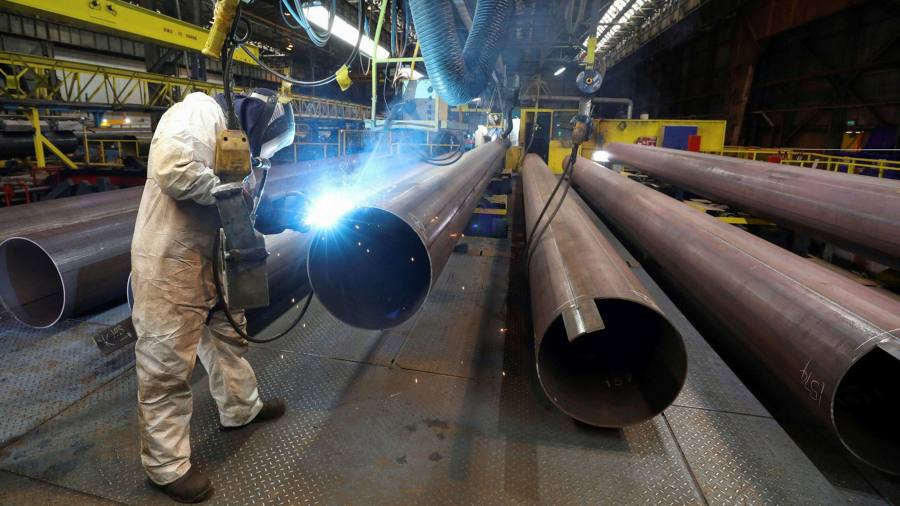[ad_1]
The good thing about history repeating itself is the chance to learn from experience. It’s not yet clear that the UK government has done that when it comes to steel.
The morass of financial engineering between GFG Alliance and its defunct lender Greensill Capital means that GFG-owned Liberty Steel could well land at the UK taxpayers’ door, in one form or another.
This, financial chicanery aside, echoes repeated crises to grip the UK steel sector since 2015. GFG boss Sanjeev Gupta’s midas touch in rolling up ailing, aged assets in a sector struggling to compete in an oversupplied global market should always have appeared less than 24-carat.
The government seems likely to step in, if needed. It is not just the 5,000 jobs at GFG’s UK sites, or the fact that many happen to fall in politically-sensitive places such as Hartlepool and Teeside.Â
The steel sector’s interconnectedness with other economic activity has been well chewed over in previous crises: government lobbying material from 2016 when Tata Steel was in peril put jobs in the steel supply chain at more than 750,000 across nearly 39,000 companies.
Government appetite for intervention has also developed since the debate around Indian-owned Tata’s Port Talbot plant. British Steel was kept operating in 2019 with nearly £600m in public funds while a buyer, in the form of China’s Jingye, was found. Celsa Steel last year received emergency funding to save 1,000 jobs and to “aid wider government policies to further benefit the UKâ€.
If the government considers steel strategically important, and it has implied it does, then it should learn from past mistakes.
In 2015, David Bailey, now at the University of Birmingham, and Paul Forrest at the Midlands Economic Forum, proposed a “conservatorship†model to support Tata’s operations while the government addressed longstanding problems for the sector, such as high energy costs, business rates, and procurement practices.
The proposal was not used then but was in effect rolled out four years later for British Steel. Except the government largely forgot about the second half of the idea.Â
Electricity costs are still 86 per cent higher than in Germany and 62 per cent higher than in France, according to industry group UK Steel. The fact the government this month launched a “Steel Procurement Taskforce†reflects the lack of meaningful movement on that issue. The conservatorship bought time but it did not buy much change towards a viable UK steel industry.Â
In reality, the government also got lucky in finding a deep-pocketed buyer for British Steel in 2019. The chances of a similarly neat ending for Liberty’s hodgepodge portfolio feels remote: the financial complexity around it will deter buyers, as will the challenges for end markets such as aerospace.Â
But the big picture has also changed with the UK’s commitment to reaching net zero emissions of greenhouse gases.Â
For a start, it would be an odd signal to let Liberty’s electric arc furnaces in Rotherham close, shifting UK primary steel production towards the emissions-heavy blast furnaces that account for about two-thirds of UK capacity.
More fundamentally, the Climate Change Committee has suggested that UK steel production needs to be “near-zero†emissions by 2035, a hugely ambitious target with no current strategy to get there.Â
Whether the technology behind the UK transition is recycled steel production through electric furnaces, carbon capture of emissions, or hydrogen-based steelmaking (or more likely a combination), the sector needs £6bn-£7bn in investment on the sites themselves, on top of supporting infrastructure, estimates Chris McDonald at the Materials Processing Institute.
The outgoing boss at British Steel has said the company is holding back on investment because of a lack of clarity. The UK is notably behind other countries such as Sweden in pursuing truly “green†steelmaking using direct reduced iron and hydrogen.
A government that has previously argued European state-aid rules tied its hands is unencumbered, albeit without the benefit of a functioning industrial strategy or state subsidy regime to guide the way.Â
Whatever form government support in this steel crisis might take, it will be wasted without measures to address longstanding operational challenges and a clear road map for where UK steel production goes from here.
[ad_2]
Source link






